The aim of our project was to reduce the number of missed appointments at the Health Centre due to an increasing number of students missing appointments. We created 2 posters (image 1 and 2), which featured a variety of persuasive techniques. These posters were shared on university facebook groups (image 3), as well as around the university in week 9, where most Warwick students could see them. The number of missed appointments was slightly lower from week 9 to week 10, meaning our project made a slight difference.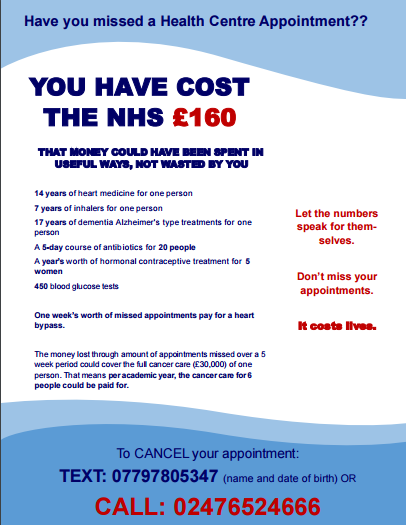 Image 1: Have you missed a Health Centre appointment?
Image 1: Have you missed a Health Centre appointment? Image 2: What could you do with £160?On social media the posters were displayed with the following captions:HAVE YOU MISSED A HEALTH CENTRE APPOINTMENT? To cancel, simply call or text in advance! Missing appointments costs lives.WHAT COULD YOU DO WITH £160? Every missed health centre apponitment costs the NHS £160. To cancel, simply call or text in advance! Missing appointments costs lives.
Image 2: What could you do with £160?On social media the posters were displayed with the following captions:HAVE YOU MISSED A HEALTH CENTRE APPOINTMENT? To cancel, simply call or text in advance! Missing appointments costs lives.WHAT COULD YOU DO WITH £160? Every missed health centre apponitment costs the NHS £160. To cancel, simply call or text in advance! Missing appointments costs lives.
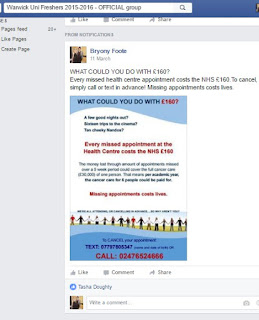 Image 3: Screenshots from University of Warwick Freshers Facebook groupOur posters also used data on the NHS medicine costs (data from Regional Drug & Therapeutics Centre Newcastle, 2015), in order to make non-attenders feel guilty about the impact of missed appointments (e.g. stating the £160 could pay for “7 years of inhalers for one person”).Using missed appointment data provided by the University of Warwick Health Centre, we found that missed appointments decreased by a small amount (1 hour) in the week after our posters were displayed. Therefore, our poster campaign may have had a slight effect on total missed appointment time.ReferencesHallsworth, M., Berry, D., Sanders, M., Sallis, A., King, D., Vlaev, I., & Darzi, A. (2015). Stating appointment costs in SMS reminders reduces missed hospital appointments: Findings from two randomised controlled trials. PLoS One, 10 (9): e0137306. doi:10.137/journal.pone.0137306 Regional Drug and Therapeutics Centre (Newcastle). (2015). Cost comparison charts, Retrieved from http://gmmmg.nhs.uk/docs/cost_comparison_charts.pdf.Bryony FooteNatasha DoughtyLuca VillaOwain Ritchie
Image 3: Screenshots from University of Warwick Freshers Facebook groupOur posters also used data on the NHS medicine costs (data from Regional Drug & Therapeutics Centre Newcastle, 2015), in order to make non-attenders feel guilty about the impact of missed appointments (e.g. stating the £160 could pay for “7 years of inhalers for one person”).Using missed appointment data provided by the University of Warwick Health Centre, we found that missed appointments decreased by a small amount (1 hour) in the week after our posters were displayed. Therefore, our poster campaign may have had a slight effect on total missed appointment time.ReferencesHallsworth, M., Berry, D., Sanders, M., Sallis, A., King, D., Vlaev, I., & Darzi, A. (2015). Stating appointment costs in SMS reminders reduces missed hospital appointments: Findings from two randomised controlled trials. PLoS One, 10 (9): e0137306. doi:10.137/journal.pone.0137306 Regional Drug and Therapeutics Centre (Newcastle). (2015). Cost comparison charts, Retrieved from http://gmmmg.nhs.uk/docs/cost_comparison_charts.pdf.Bryony FooteNatasha DoughtyLuca VillaOwain Ritchie
Do you always wash your hands before you eat?
It’s a basic hygiene practice that you will probably ignore because the washroom is simply too far away from the cafe till. So we decided to make it more convenient for you, and push for a petition to place hand sanitisers in all eateries within the Warwick Campus.Why hand sanitisation is important:Hand hygiene is found to significantly reduce gastrointestinal illness and even respiratory illness (Aiello, Coulborn, Peres & Larson, 2008). Although there hasn’t been any major case of infectious illness on campus, we felt that we should not wait for it to happen before the university take action. Evidence has shown that placing hand sanitisers at convenient places around school campuses have reduced illness rates and absenteeism (White et al., 2003). So why not cultivate such hygiene practices in Warwick too?How we did it:In order to see the effectiveness of adding a hand sanitiser to food outlets, we hosted a bake sale (raising money for Breast Cancer Now and Coppafeel). We got people to come to our bake sale via Facebook: And what we made for our bake sale:
And what we made for our bake sale: A hand sanitiser was placed on the table alongside the food and it was free for anyone to use. This will serve as a platform for us to ask for their support in signing the petition for making hand sanitisers available in all Warwick food outlets. In a bid to get people to notice and use the hand sanitisers (technique: availability heuristics/salience), we attached signs to the hand sanitisers, which we alternate from time to time in order to see which type of sign would be the ost effective at changing participants behaviour.Sign 1: No sign attached (Control)Sign 2: Salience
A hand sanitiser was placed on the table alongside the food and it was free for anyone to use. This will serve as a platform for us to ask for their support in signing the petition for making hand sanitisers available in all Warwick food outlets. In a bid to get people to notice and use the hand sanitisers (technique: availability heuristics/salience), we attached signs to the hand sanitisers, which we alternate from time to time in order to see which type of sign would be the ost effective at changing participants behaviour.Sign 1: No sign attached (Control)Sign 2: Salience Sign 3: Informative
Sign 3: Informative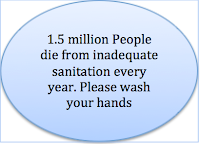 We used the door-in-the-face technique to get them to sign the petition. For those who used the hand sanitisers, we thank them for using it. We then proceed with the first request: we asked them whether they would be willing to become an ambassador for Warwick hygiene (fictional), which requires training every month for a year. Our second request was to have them sign a petition now for making hand sanitisers available in all campus eateries. Results:We found that when there was no sign attached to the hand sanitiser, only 10% of those who approached our till used it. However, when the hand sanitiser was attached with an inviting sign (sign 2), 45% of those approached used it. It further increased to 75% when the sign was informative (sign 3). As expected, no one was willing to accept the first request of becoming a hygiene ambassador citing busy schedules. They all agreed to the second request of signing the petition. Petition:
We used the door-in-the-face technique to get them to sign the petition. For those who used the hand sanitisers, we thank them for using it. We then proceed with the first request: we asked them whether they would be willing to become an ambassador for Warwick hygiene (fictional), which requires training every month for a year. Our second request was to have them sign a petition now for making hand sanitisers available in all campus eateries. Results:We found that when there was no sign attached to the hand sanitiser, only 10% of those who approached our till used it. However, when the hand sanitiser was attached with an inviting sign (sign 2), 45% of those approached used it. It further increased to 75% when the sign was informative (sign 3). As expected, no one was willing to accept the first request of becoming a hygiene ambassador citing busy schedules. They all agreed to the second request of signing the petition. Petition: Signatures:
Signatures: Due to confidentiality purposes, student details of those who signed are not posted up here on the blog. However, we have included them to our email to the commercial operations director as proof that the signatures are by university staff and students. We also filled in a “start a campaign” form on the su website. Here is the email we sent to the commercial operations director:
Due to confidentiality purposes, student details of those who signed are not posted up here on the blog. However, we have included them to our email to the commercial operations director as proof that the signatures are by university staff and students. We also filled in a “start a campaign” form on the su website. Here is the email we sent to the commercial operations director: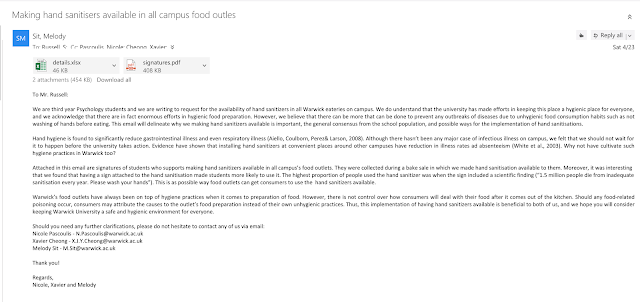 ** Update as of 28 April 2016:We have received an email back from the Campaign Coordinator who informed us he has taken action to introduce hand sanitisers in SU-owned food outlets!
** Update as of 28 April 2016:We have received an email back from the Campaign Coordinator who informed us he has taken action to introduce hand sanitisers in SU-owned food outlets! And true enough, here’s one from Xananas:
And true enough, here’s one from Xananas: Although they had their reasons not to place the informative sign we suggested, they were willing to put on this inviting sign.You can now have clean hands to eat on campus now!- Nicole Pascoulis- Melody Sit- Xavier CheongReferences:Aiello, A.E., Coulborn, R.M., Perez, V.P., & Larson, E.L. (2008). Effect of hand hygiene on infectious deisease risk in the community setting: A meta-analysis, American Journal of Public Health, 98(8), 1372-1381.Jónsdóttir, H.L., Holm, J.E., Poltavski, D., & Vogeltanz-Holm, N. (2014) The role of fear and disgust in predicting the effectiveness of television advertisments that graphically depict the health harms of smoking, Preventing Chronic Disease, 11.White, C., Kolble, R., Carlson, R., Lipson, N., Dolan, M. Ali, Y., Cline, M. (2003). The effect offhand hygiene on illness rate among students in university residence halls, American Journal Of Infection Control, 31(6), 364-370
Although they had their reasons not to place the informative sign we suggested, they were willing to put on this inviting sign.You can now have clean hands to eat on campus now!- Nicole Pascoulis- Melody Sit- Xavier CheongReferences:Aiello, A.E., Coulborn, R.M., Perez, V.P., & Larson, E.L. (2008). Effect of hand hygiene on infectious deisease risk in the community setting: A meta-analysis, American Journal of Public Health, 98(8), 1372-1381.Jónsdóttir, H.L., Holm, J.E., Poltavski, D., & Vogeltanz-Holm, N. (2014) The role of fear and disgust in predicting the effectiveness of television advertisments that graphically depict the health harms of smoking, Preventing Chronic Disease, 11.White, C., Kolble, R., Carlson, R., Lipson, N., Dolan, M. Ali, Y., Cline, M. (2003). The effect offhand hygiene on illness rate among students in university residence halls, American Journal Of Infection Control, 31(6), 364-370
Our dream: getting everyone to clean
We aimed to tackle the unhygienic behaviours of students at the University of Warwick, primarily targeting first year students in on-campus accommodation. In order to do this, we created a series of posters aiming to encourage hygienic behaviours.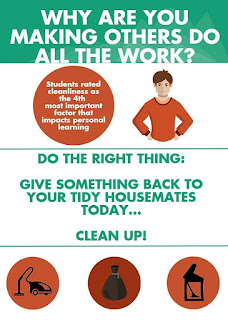
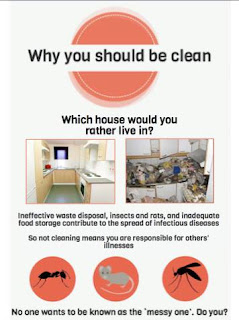
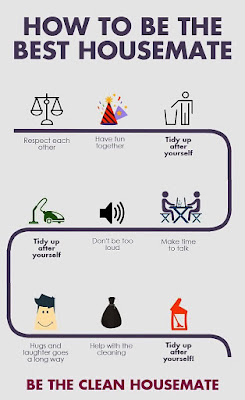
 These posters were uploaded to social media, on the ‘Warwick Uni Freshers 2015-16’ page and a selection of first year accommodation pages on Facebook. We hoped that the persuasive methods used in the posters, such as responsibility, reciprocity, contrast effects, rhetorical questions, repetition and personal identity, would encourage students to engage in cleaner behaviours.This is believed to be an important area in which to achieve behaviour change, especially as research has shown that students rate cleanliness as the fourth most important factor impacting personal learning during higher education (Campbell & Bigger, 2008). Also, ineffective waste disposal and poor food storage leads to the invasion of insects and rats, and contributes to the spread of diseases (Krieger & Higgins, 2002). We predicted that highlighting these facts would increase the salience of the issue, ultimately motivating individuals to engage in cleaner behaviours.
These posters were uploaded to social media, on the ‘Warwick Uni Freshers 2015-16’ page and a selection of first year accommodation pages on Facebook. We hoped that the persuasive methods used in the posters, such as responsibility, reciprocity, contrast effects, rhetorical questions, repetition and personal identity, would encourage students to engage in cleaner behaviours.This is believed to be an important area in which to achieve behaviour change, especially as research has shown that students rate cleanliness as the fourth most important factor impacting personal learning during higher education (Campbell & Bigger, 2008). Also, ineffective waste disposal and poor food storage leads to the invasion of insects and rats, and contributes to the spread of diseases (Krieger & Higgins, 2002). We predicted that highlighting these facts would increase the salience of the issue, ultimately motivating individuals to engage in cleaner behaviours.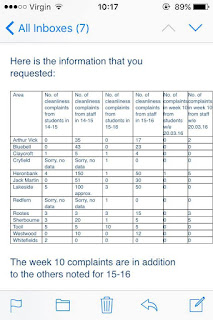 In order to gain a more in-depth insight into how big the problem was we contacted Warwick Accommodation requesting the total number of complaints in the last academic year (2014-2015), as well as the number of complaints from this academic year so far (2015 – March 2016). The complaints were from either staff (including cleaners) or students concerning the uncleanliness of the on-campus accommodations. Then, to determine whether our posters had made an effect, we compared this initial data with the number of complaints made during the week after our posters had been posted (week 10 of term 2, 14th -20th March 2016). To look for differences before and after the posters being made public, we worked out the average number of weekly complaints to compare with the complaints received during week 10 of term 2. Across all accommodation blocks there was not a reduction in the number of complaints received. However when focusing on the accommodation blocks that were exposed to the posters there was a reduction in the number of complaints (Figure 1.)
In order to gain a more in-depth insight into how big the problem was we contacted Warwick Accommodation requesting the total number of complaints in the last academic year (2014-2015), as well as the number of complaints from this academic year so far (2015 – March 2016). The complaints were from either staff (including cleaners) or students concerning the uncleanliness of the on-campus accommodations. Then, to determine whether our posters had made an effect, we compared this initial data with the number of complaints made during the week after our posters had been posted (week 10 of term 2, 14th -20th March 2016). To look for differences before and after the posters being made public, we worked out the average number of weekly complaints to compare with the complaints received during week 10 of term 2. Across all accommodation blocks there was not a reduction in the number of complaints received. However when focusing on the accommodation blocks that were exposed to the posters there was a reduction in the number of complaints (Figure 1.)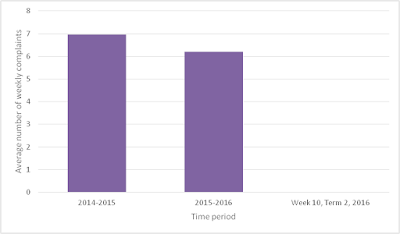 Figure-1: Number of weekly complaints on cleanliness for on-campus accommodation exposed to the persuasive postersOf course by comparing only 1 week with the 19 preceding weeks and 30 weeks from the previous year we cannot be certain that our posters alone lead to such a dramatic change. Students and staff simply may not be complaining about uncleanliness during week 10 as it is the final week of term, and so complaining at this late stage is unlikely to improve the situation as desired. Additionally complaints may have not been submitted before we obtained the data regarding number of complaints. It would be interesting to see what effect the posters would have once students are living more independently off-campus, as students no longer have the luxury of a cleaner, and so relationships and cooperation with housemates become somewhat more important. In this situation the posters may be more effective. References;Campbell, J. L., & Bigger, A. S. (2008). Cleanliness and learning in higher education, Facilities Manager, July-August, 28–36.Krieger, J., & Higgins, D. L. (2002). Housing and health: Time again for public action, American Journal of Public Health, 92, 758-768.Anna Hadjivassiliou, Natalie Croome and Rebecca Dooley
Figure-1: Number of weekly complaints on cleanliness for on-campus accommodation exposed to the persuasive postersOf course by comparing only 1 week with the 19 preceding weeks and 30 weeks from the previous year we cannot be certain that our posters alone lead to such a dramatic change. Students and staff simply may not be complaining about uncleanliness during week 10 as it is the final week of term, and so complaining at this late stage is unlikely to improve the situation as desired. Additionally complaints may have not been submitted before we obtained the data regarding number of complaints. It would be interesting to see what effect the posters would have once students are living more independently off-campus, as students no longer have the luxury of a cleaner, and so relationships and cooperation with housemates become somewhat more important. In this situation the posters may be more effective. References;Campbell, J. L., & Bigger, A. S. (2008). Cleanliness and learning in higher education, Facilities Manager, July-August, 28–36.Krieger, J., & Higgins, D. L. (2002). Housing and health: Time again for public action, American Journal of Public Health, 92, 758-768.Anna Hadjivassiliou, Natalie Croome and Rebecca Dooley
- « Previous Page
- 1
- …
- 9
- 10
- 11
- 12
- 13
- …
- 88
- Next Page »